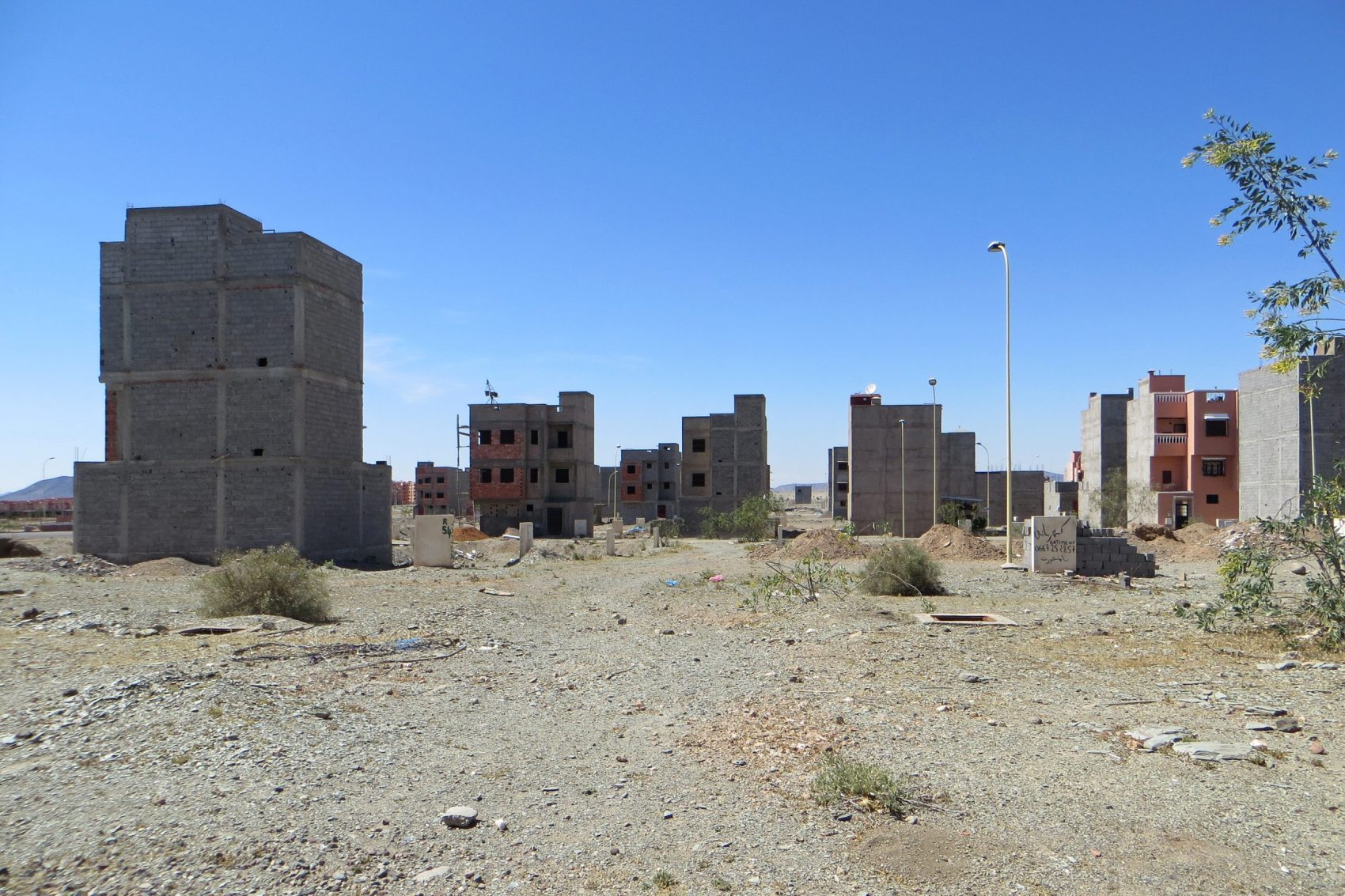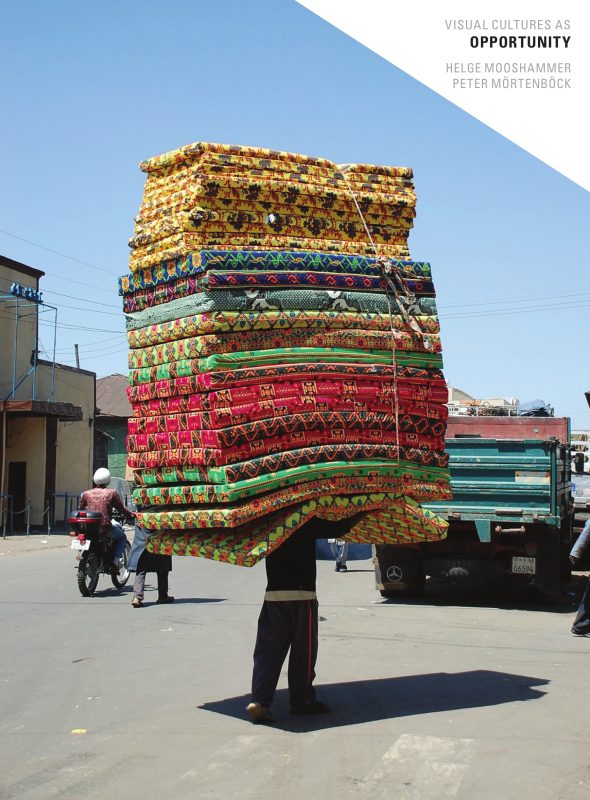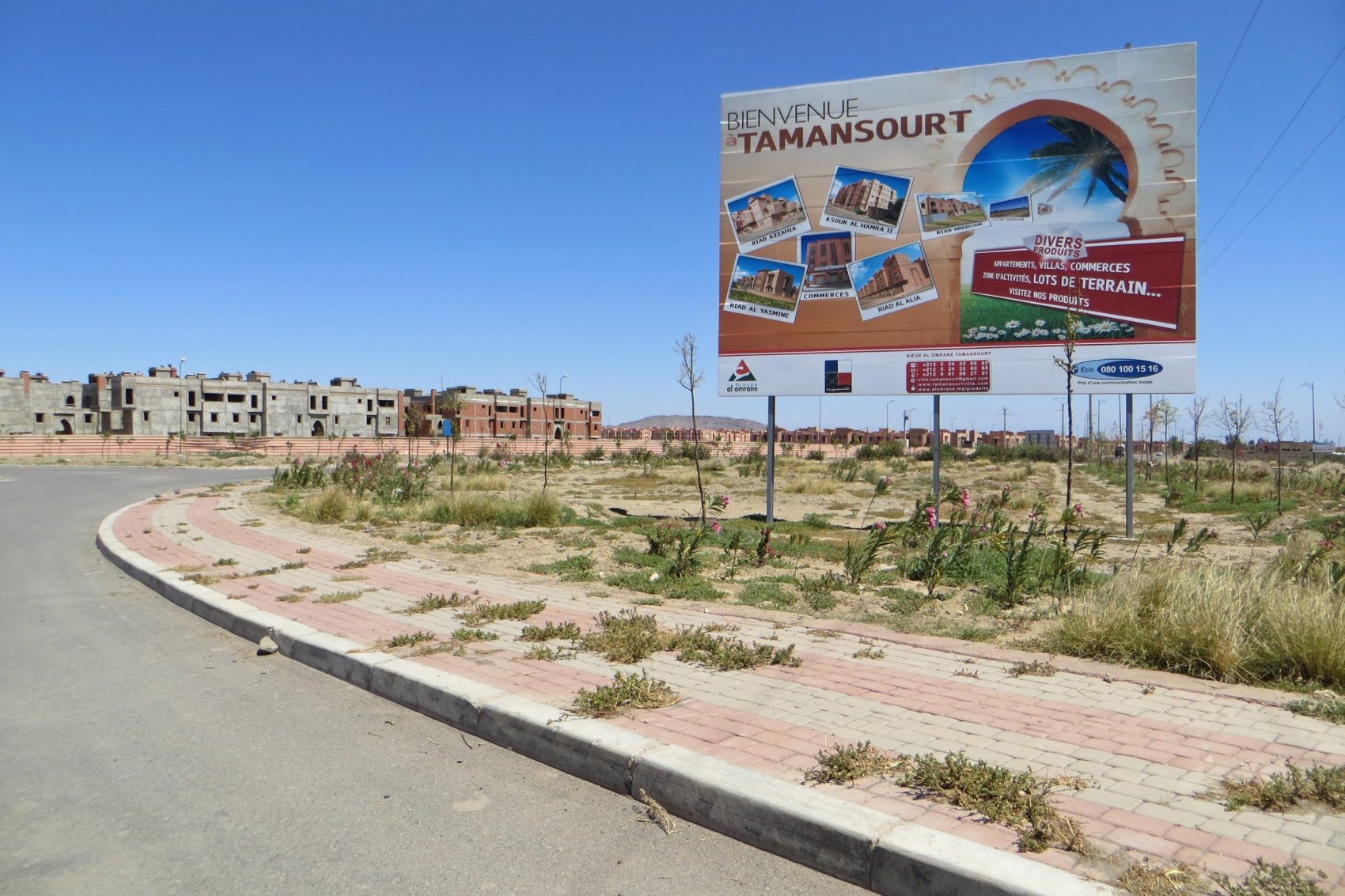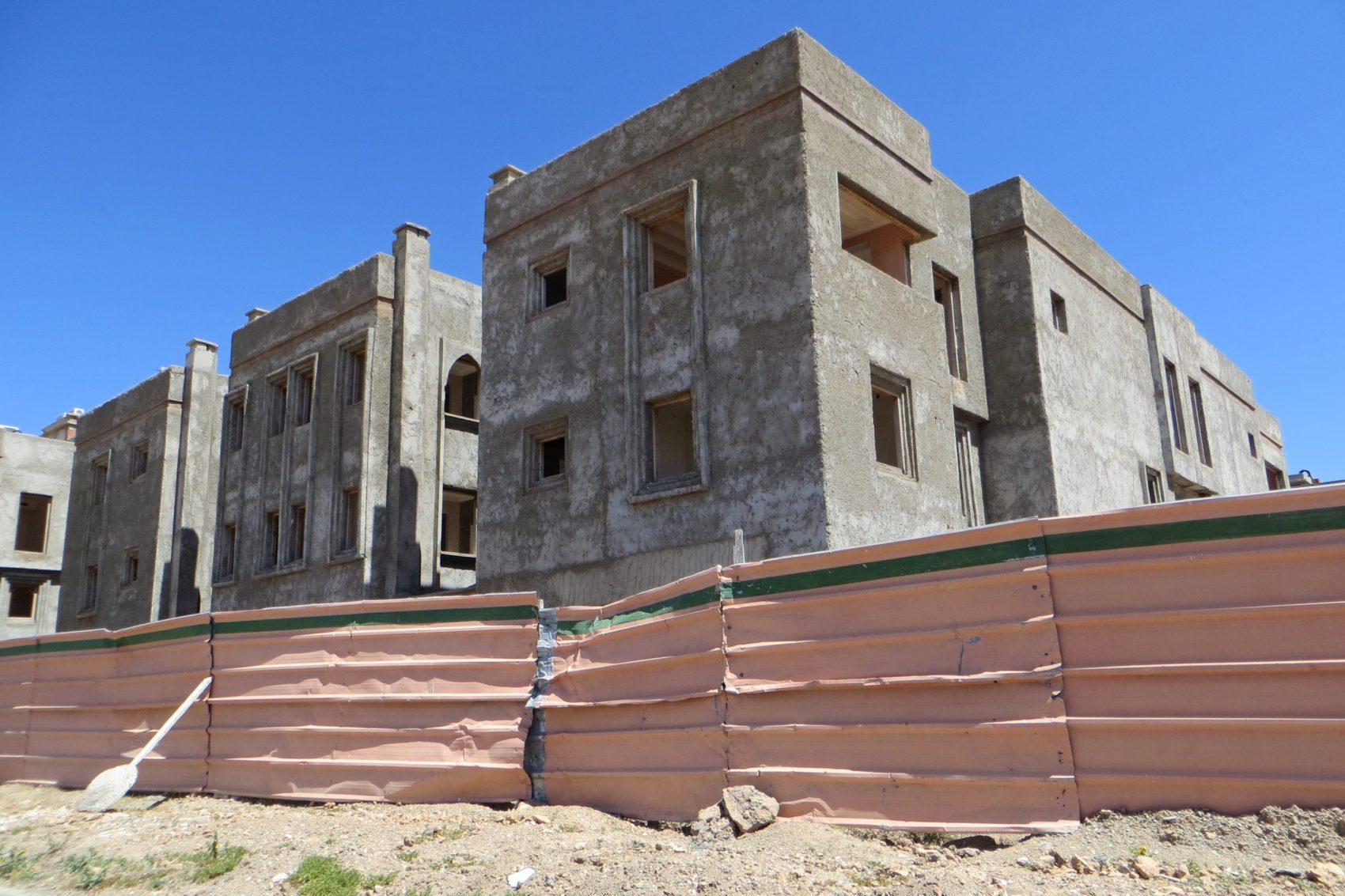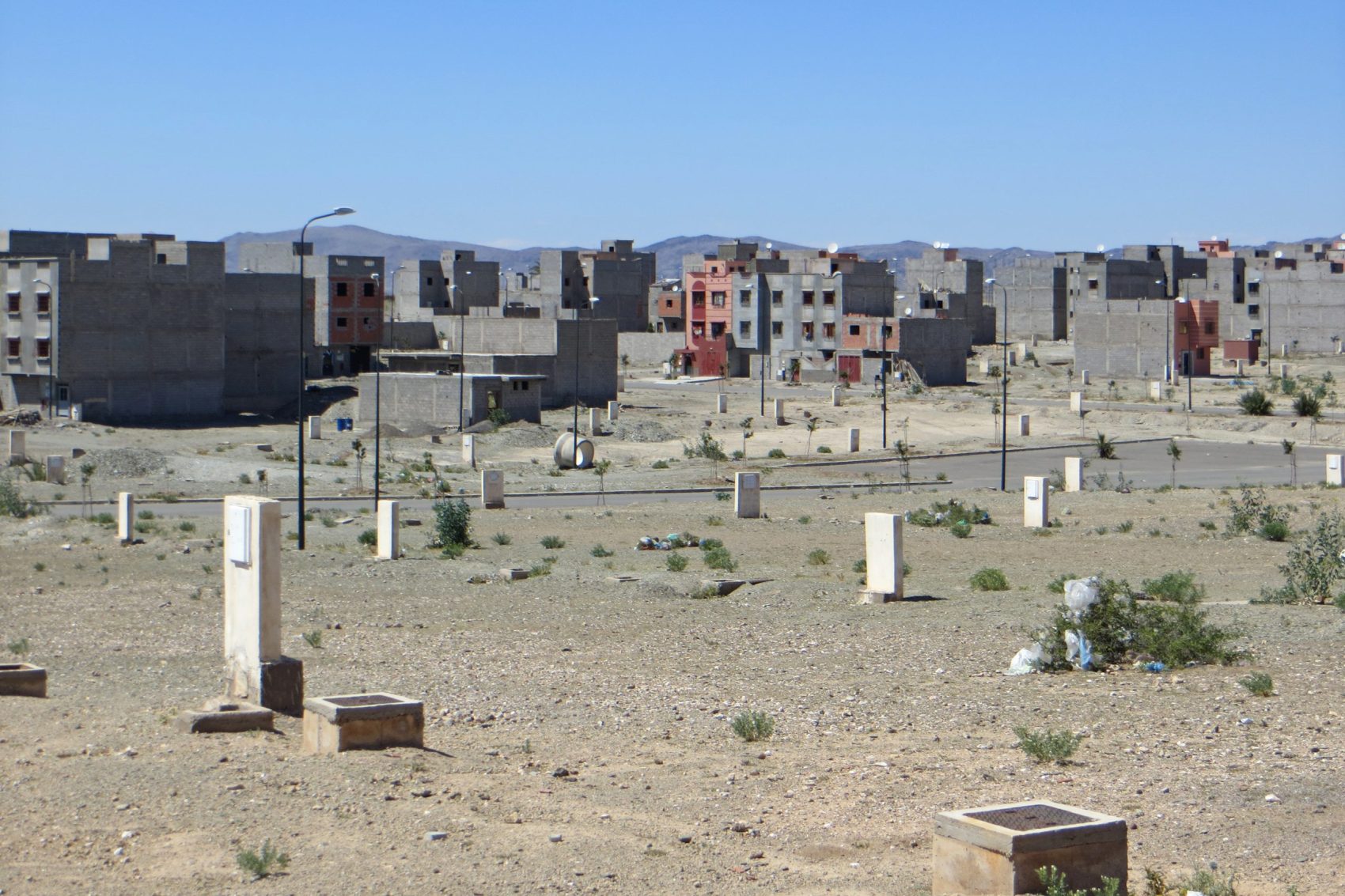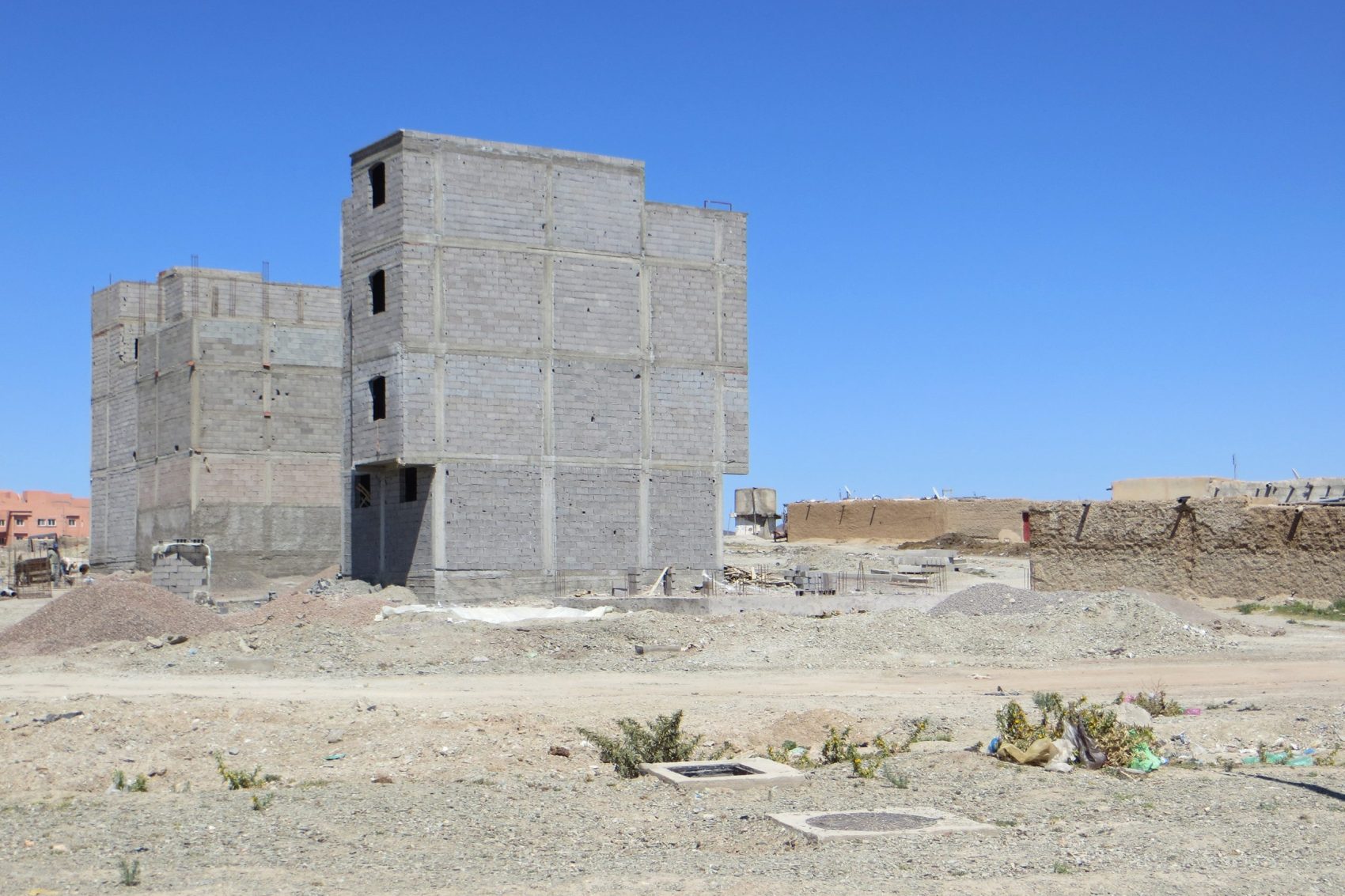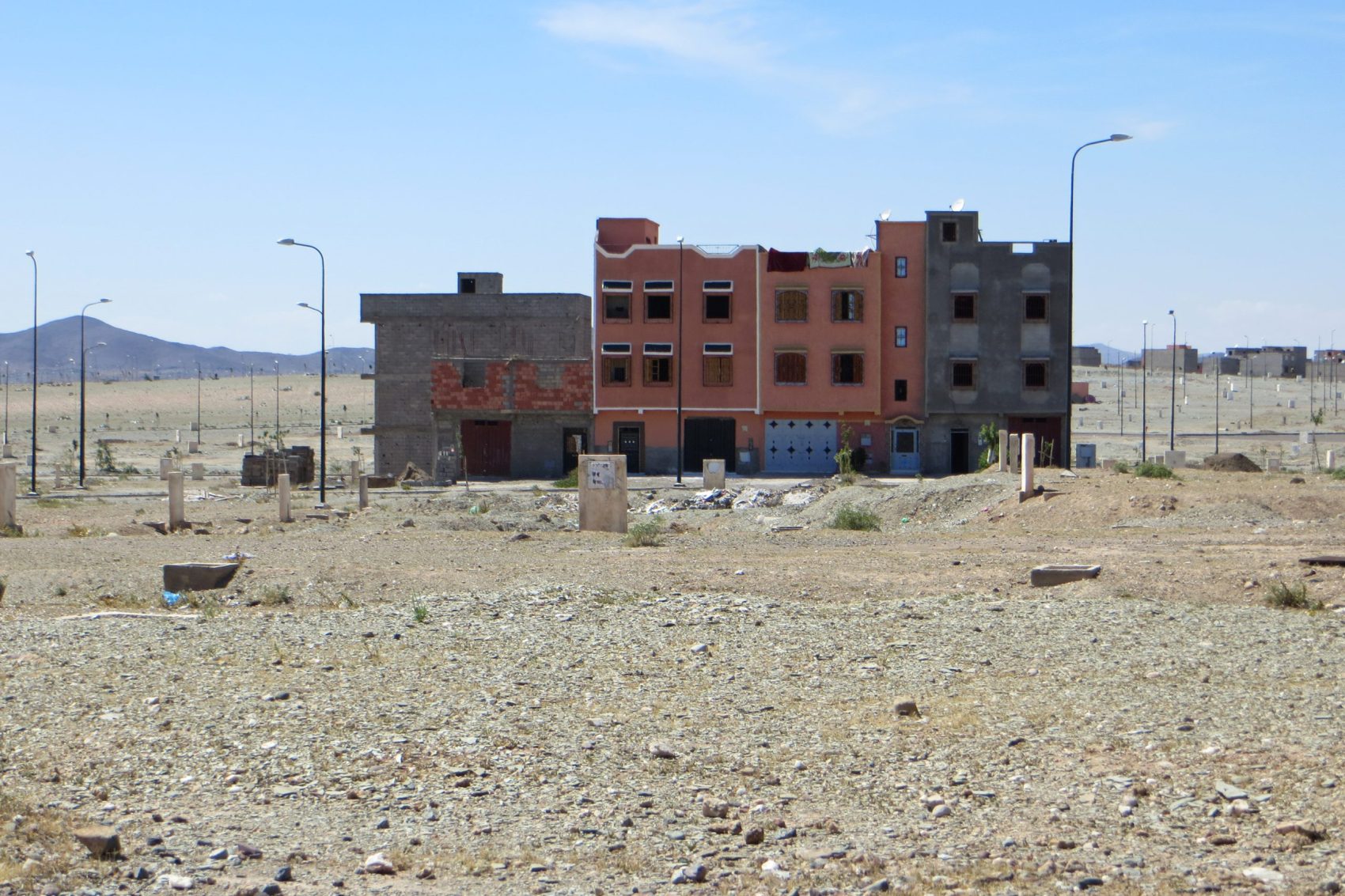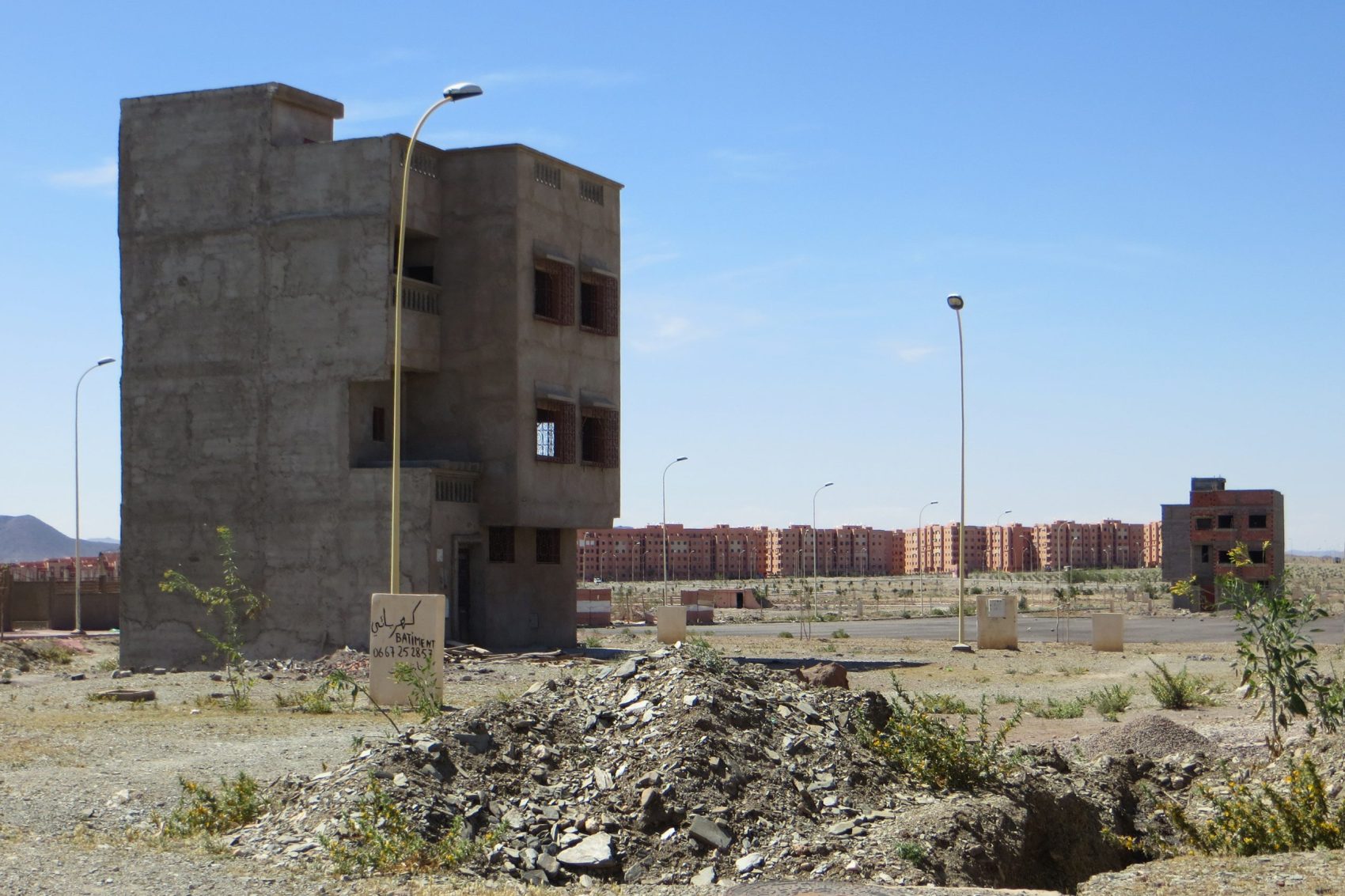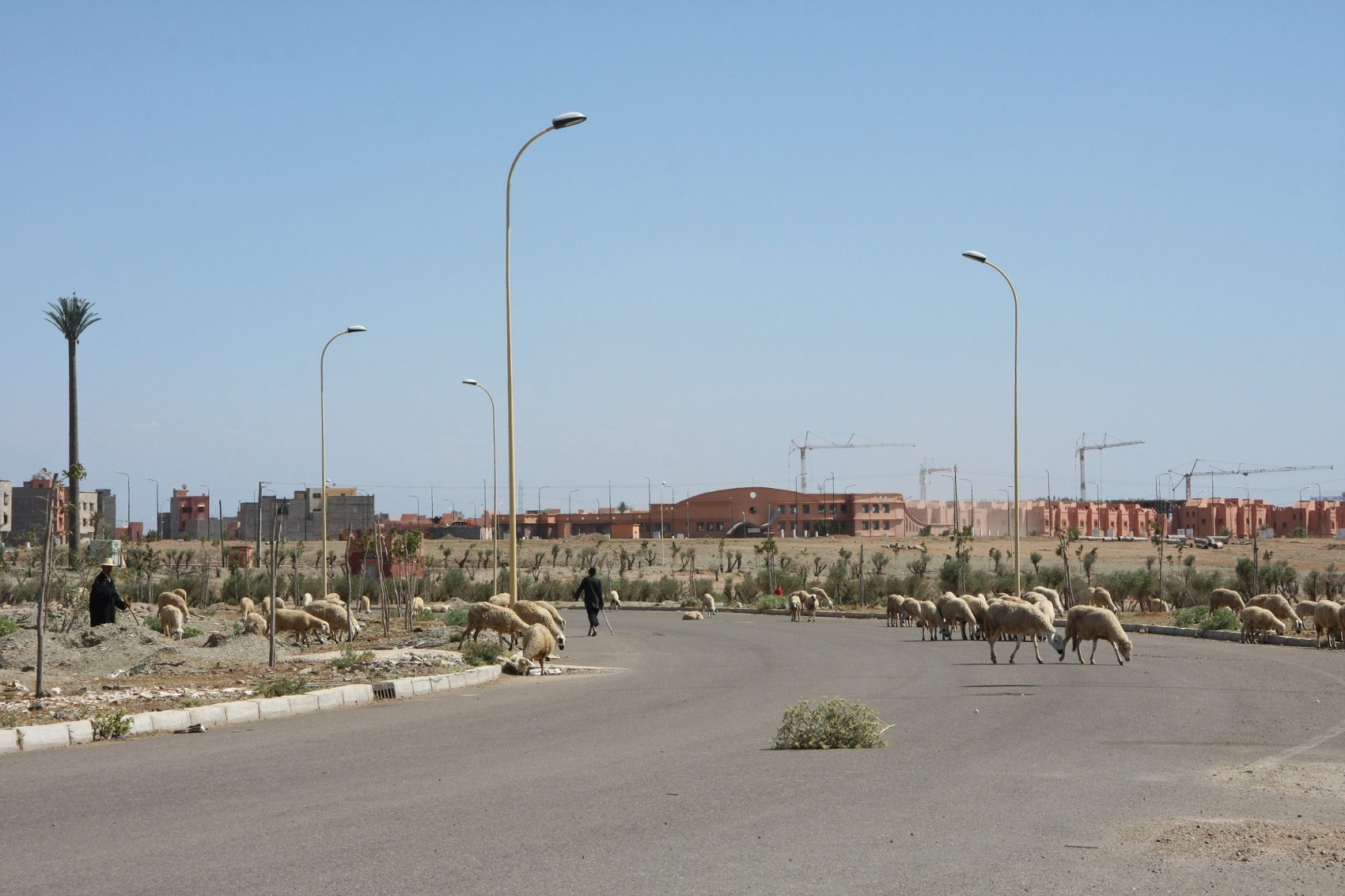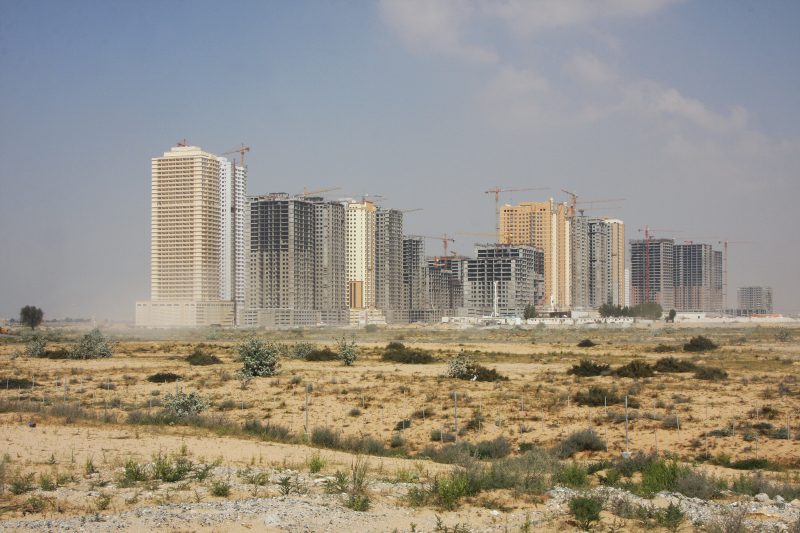BOTTOM-UP APPROPRIATION
Four thousand miles west of Dubai, on the Atlantic coast of northern Africa, an ambitious development project has come to a standstill due to the crisis-prone irregularity of capital flows. Row after row of deserted roads, complete with street lamps, traffic signs, a seemingly endless series of electricity boxes, protruding drainpipes, and curbs overgrown with weeds, produce a by-now-familiar trope of the residue of failed developments, replicated across much of the Mediterranean coast and other former investment hotspots that have gambled on property booms. While here, too, abandoned building sites are boarded up and almost-finished apartment complexes stand vacant, swathes of land fitted with infrastructure are slowly being filled informally with self-built dwellings on newly divided micro-plots sold to individual buyers by struggling developers. Tamansourt is one of fourteen villes nouvelles that were initially planned to be built throughout Morocco by 2020. In colonial times, the ville nouvelle was erected on the outskirts of the old medinas to house the foreign rulers in comfort and style. By contrast, this twenty-first-century ville nouvelle was intended to accommodate the expanding working class and was typically planned as a satellite town situated out of sight of the urban center it was designed to serve.
Located seven miles west of Marrakesh and planned for three hundred thousand inhabitants, with a target population of fifty thousand in 2013, the purpose of Tamansourt was to relieve pressure on the tourist destination’s bidonvilles – densely populated neighborhoods of informal dwellings – and free up valuable space for areas dedicated to resorts around the old town, such as the offshoot of Ibiza superclub Pacha. The favored property-based model of large-scale development has borrowed not only strategies from the commercial US real estate industry, which have now spread from Dubai to China and from Moscow to Brazil, but also architectural typologies involving variations of gated communities with scaled-down private amenities, all built in an eclectic mix of (re)imported styles – aesthetic options range from Moorish to Spanish Revival to Contemporary Modern. The investment rationale shared across all these different sites produces a global architectural vernacular conveying a prestigious lifestyle irrespective of a property’s actual status or whether the style decorates a multimillion-dollar villa in California, a sea-view apartment in Dubai Marina, or an apartment in the deserts of Ajman or Marrakesh.
The employment of a commercial development model to provide mass housing is part of the ongoing assimilation of Morocco into global economic circuits. Markets targeted in this way range from municipal services and information technology to the tourism industry, which is being streamlined into the profitable brand of “international style” five-star resorts – a fusion of Asian, Californian, and Mediterranean aesthetics implemented through design, amenities, and cuisine. In the case of Marrakesh, this model of speculative development successfully runs the market for holiday homes that is now widely accessible to foreign investors due to the proliferation of budget flight connections to Europe and beyond.
When the mortgage market for lower- and middle-income properties in Morocco dried up after 2008, developers in Tamansourt increasingly turned to selling plots rather than building apartments. In 2014, the cost of an empty lot of approximately one thousand square feet, water and electricity services included, was equal to the price of an apartment of similar size (180,000 to 250,000 Moroccan dirhams, or circa US$18,300 to 25,400) but afforded “self-developers” the possibility of adding multiple stories according to their financial situation. The style of these new self-built structures differs markedly from that of the image-oriented commercial developments in Tamansourt. Aiming to optimize floor areas, they form solid three-to-four-story blocks of concrete brick walls occupying the entire plot with openings only to the streets and tiny inner courtyards. In fact, the building fabric of the “urban village” arising on the layout of the initial plan closely resembles the densely built-up bidonvilles these villes nouvelles were meant to replace.
